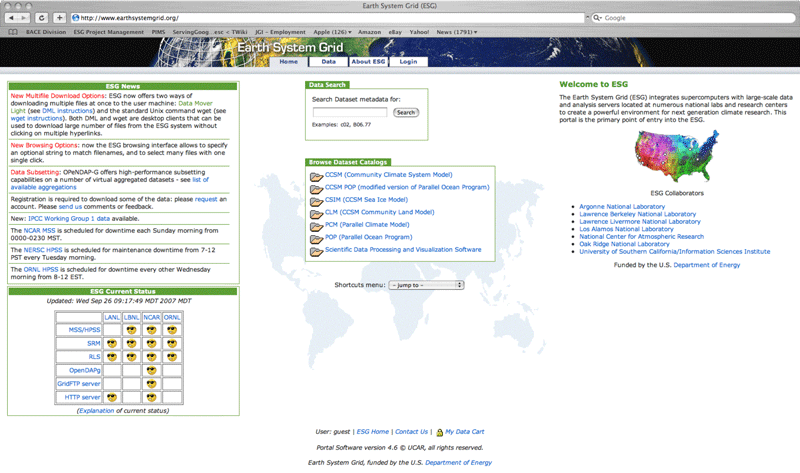ESG is a large, production, distributed system – a Data Grid – with primary access points via three web portals: one for general climate research data; another dedicated to the IPCC activity; and a third for the Community Climate System Model (CCSM) Biogeochemistry (BGC) Working Group, which is just going into production at ORNL. The deployment of these three separate portals is driven by international data requirements, restrictions, and timelines. However, they are all based on the same underlying software system. Our goal in ESG-CET is to achieve complete integration of these focused archives, while providing the tailored access and other controls required by the various data owners. In this way, we will provide ESG users with coherent access to ever-growing and increasingly diverse collections of global community climate data.
Users of the ESG portal must first register, at which time they are granted appropriate privileges and access to data collections. The main portal page, shown in Figure 1, provides news, status, and live monitoring of ESG. Once logged in, users may either search or browse ESG catalogs to locate desired datasets, with the option of browsing both collection-level and file/usage-level metadata. Based on this perusal of the catalogs, users may gather a collection of files into a “DataCart” or request an “aggregation,” which allows them to request a specific set of variables subject to a spatiotemporal constraint. Selected data may then be downloaded to the user’s system, including datasets that are on deep storage at multiple sites behind security firewalls. Group-based authorization mechanisms allow the ESG administrators to control which users can access which data. These capabilities are made possible by a collection of ESG management, data publishing, and large-scale data transport tools.

The ESG system includes a metrics-gathering capability that keeps track of user activity. Interactive displays as well as reports allow us to track what data is downloaded, how often, and by whom. The resulting data has proved invaluable not only for reporting to sponsors and data owners on degree of use (its initial intent), but also as a guide to system development and optimization.






